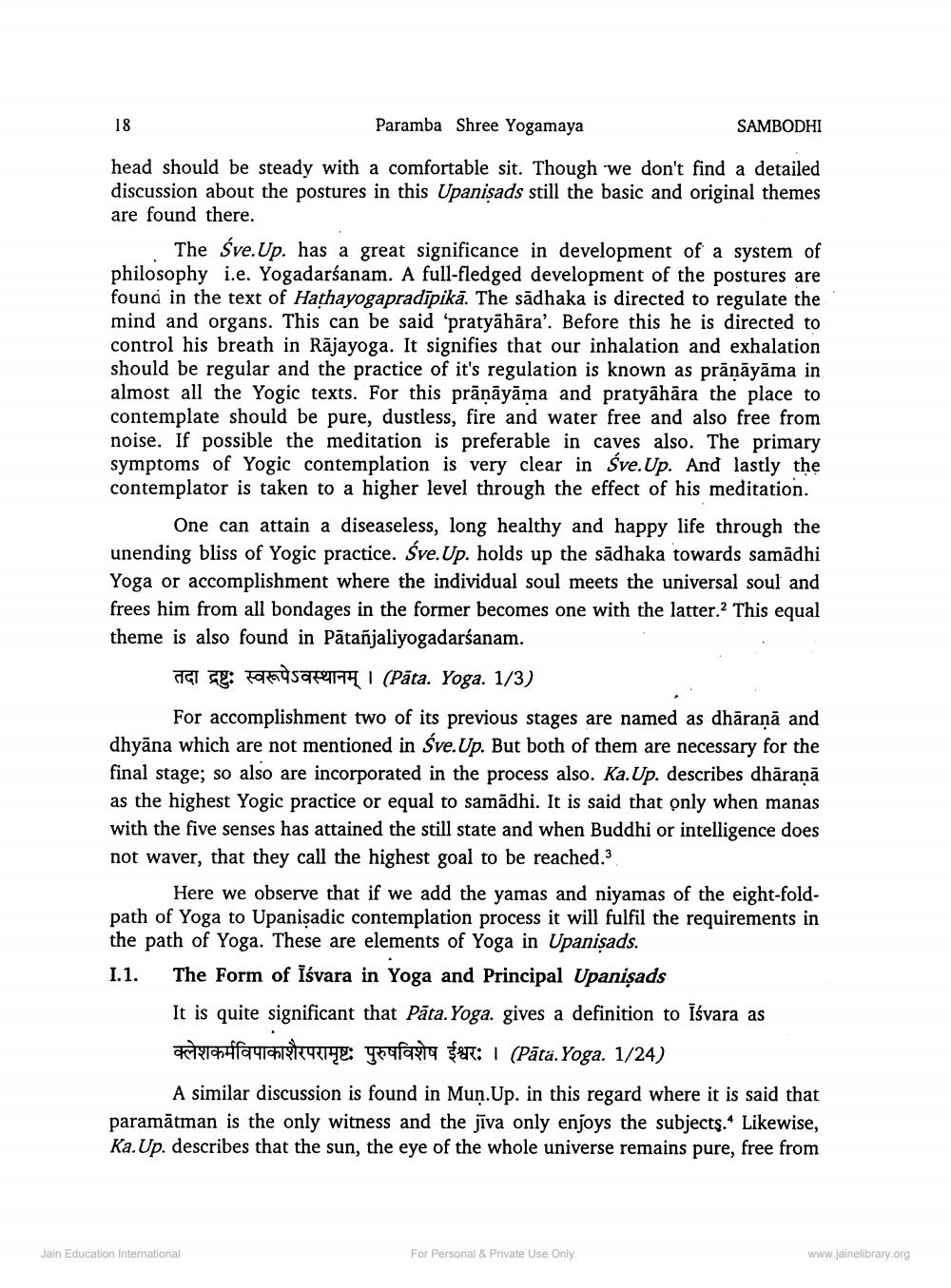________________
18
Paramba Shree Yogamaya
SAMBODHI
head should be steady with a comfortable sit. Though we don't find a detailed discussion about the postures in this Upanisads still the basic and original themes are found there.
The Śve. Up. has a great significance in development of a system of philosophy i.e. Yogadarśanam. A full-fledged development of the postures are found in the text of Hathayogapradīpikā. The sādhaka is directed to regulate the mind and organs. This can be said 'pratyāhāra'. Before this he is directed to control his breath in Rājayoga. It signifies that our inhalation and exhalation should be regular and the practice of it's regulation is known as prānāyāma in almost all the Yogic texts. For this prāņāyāma and pratyāhāra the place to contemplate should be pure, dustless, fire and water free and also free from noise. If possible the meditation is preferable in caves also. The primary symptoms of Yogic contemplation is very clear in Sve. Up. And lastly the contemplator is taken to a higher level through the effect of his meditation.
One can attain a diseaseless, long healthy and happy life through the unending bliss of Yogic practice. Sve. Up. holds up the sādhaka towards samadhi Yoga or accomplishment where the individual soul meets the universal soul and frees him from all bondages in the former becomes one with the latter. This equal theme is also found in Patanjaliyogadarśanam.
GI : Taysan (Pāta. Yoga. 1/3)
For accomplishment two of its previous stages are named as dhāraņā and dhyāna which are not mentioned in Sve.Up. But both of them are necessary for the final stage; so also are incorporated in the process also. Ka.Up. describes dhāraņā as the highest Yogic practice or equal to samadhi. It is said that only when manas with the five senses has attained the still state and when Buddhi or intelligence does not waver, that they call the highest goal to be reached."
Here we observe that if we add the yamas and niyamas of the eight-foldpath of Yoga to Upanisadic contemplation process it will fulfil the requirements in the path of Yoga. These are elements of Yoga in Upanişads. 1.1. The Form of Isvara in Yoga and Principal Upanişads
It is quite significant that Pāta. Yoga. gives a definition to īśvara as conheffausiteure: yrafasta $24: 1 (Pāta. Yoga. 1/24)
A similar discussion is found in Mun.Up. in this regard where it is said that paramātman is the only witness and the jīva only enjoys the subjects. Likewise, Ka.Up. describes that the sun, the eye of the whole universe remains pure, free from
Jain Education International
For Personal & Private Use Only
www.jainelibrary.org




